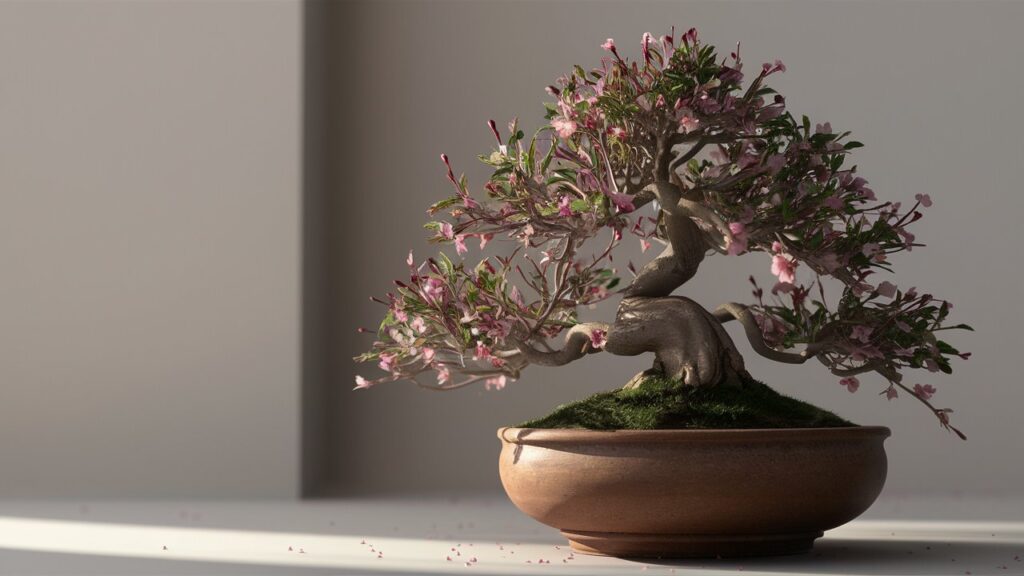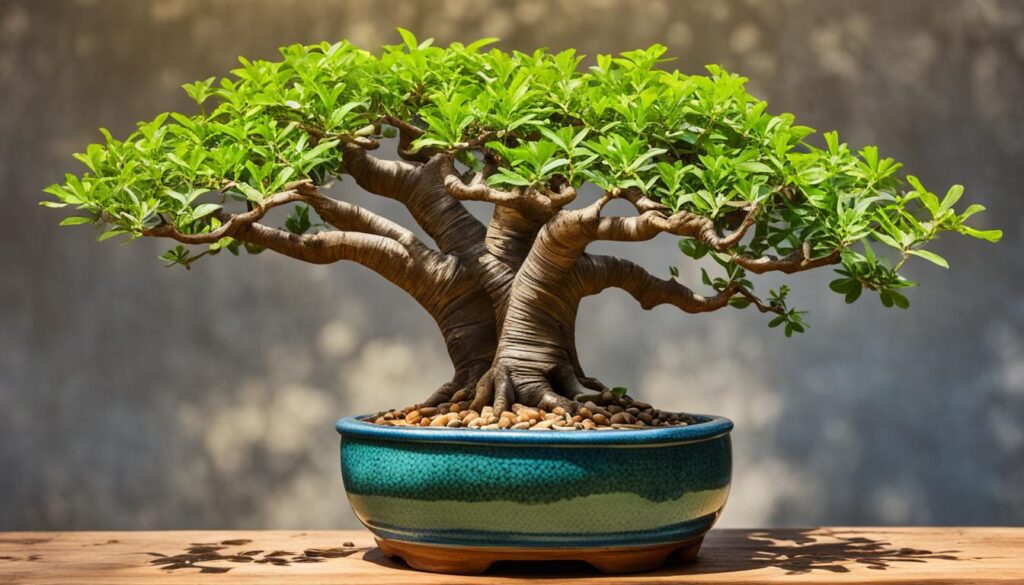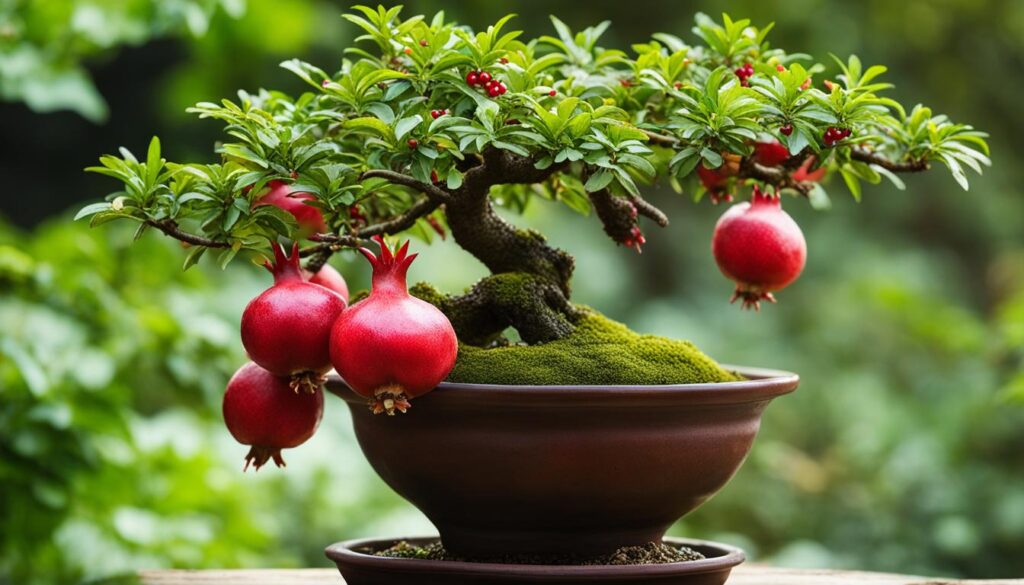The Chinese Sweet Plum Bonsai is an evergreen tree from the Rhamnaceae family, native to southern China. It is one of the fastest-growing bonsai trees, known for its small leaves that can be reduced even smaller, making it ideal for bonsai cultivation. In spring, it produces small white flowers, followed by tiny black fruits in summer.
This bonsai is popular for indoor display due to its elegant appearance and adaptability. It’s also a classic choice in Chinese penjing, where it’s used to create miniature landscapes. Renowned for its delicate beauty and rapid growth, the Chinese Sweet Plum Bonsai adds a touch of elegance to any space.
Key Takeaways
ToggleBenefits of growing a Chinese sweet plum bonsai
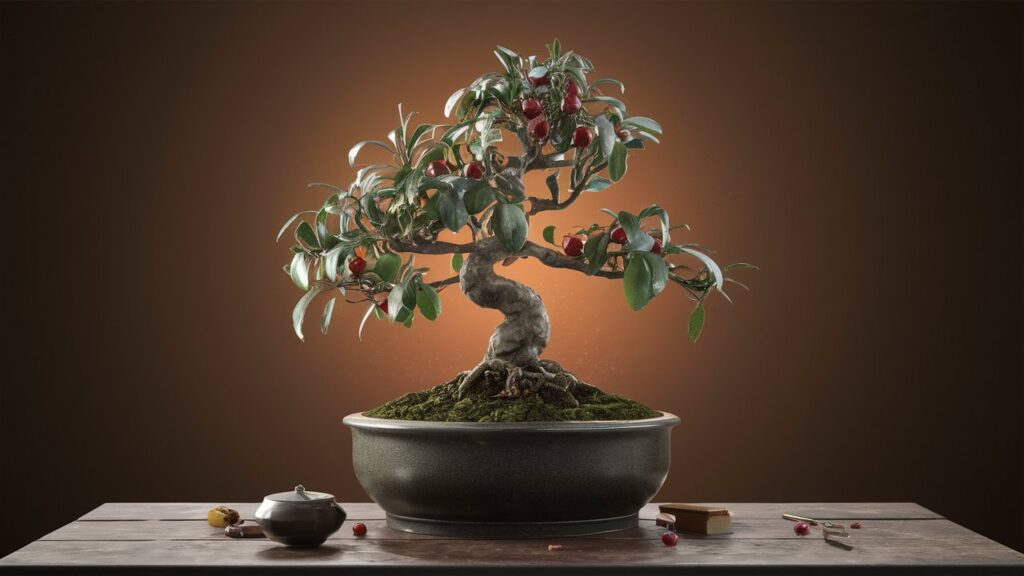
Adds Character and Elegance: The Chinese Sweet Plum Bonsai enhances any room with its natural beauty and intricate design. Its graceful appearance serves as a striking focal point, elevating the aesthetics of your living or working space.
Creates a Sense of Serenity: Having this bonsai in your home or office brings a sense of tranquility and calmness. Its presence encourages mindfulness and relaxation, making it a perfect addition to any environment seeking a peaceful ambiance.
A Rewarding Hobby with Centuries-Old Traditions: Growing a Chinese Sweet Plum Bonsai connects you to a long-standing tradition of bonsai cultivation that spans centuries. It’s a fulfilling hobby that not only challenges your creativity and patience but also allows you to partake in a cultural art form that has been cherished for generations.
Placement and Light requirements
Ideal placement
Outdoors in Summer: When temperatures consistently stay above 50°F (10°C), it’s best to place your Chinese Sweet Plum Bonsai outdoors. The natural sunlight and fresh air will promote healthy growth and vibrant foliage. Ensure the bonsai is sheltered from harsh winds and heavy rain to prevent any damage.
Indoors in Winter: During the colder months, it’s advisable to bring your bonsai indoors to protect it from frost and low temperatures. Place it near a south-facing window where it can receive ample sunlight. This location ensures that the bonsai gets the warmth and light it needs to thrive in the winter.
Sunlight Requirements: The Chinese Sweet Plum Bonsai needs at least 6 hours of direct sunlight per day to maintain its health and vigor. Whether indoors or outdoors, ensure that it is placed in a spot where it can bask in the sun’s rays for an extended period, as adequate sunlight is crucial for its growth and overall well-being.
Protecting from cold
Bring Indoors When Nighttime Temps Drop Below 45°F: As temperatures start to fall, especially at night, it’s crucial to bring your Chinese Sweet Plum Bonsai indoors once the nighttime temperatures drop below 45°F (7°C). This precaution helps protect the tree from cold stress and potential damage.
Loses Leaves Below 55°F: The bonsai begins to lose its leaves when exposed to temperatures below 55°F (13°C). This leaf drop can weaken the tree, so it’s important to monitor the temperature closely and ensure it stays in a warm environment during colder months.
Suffers Dieback Below 25°F: When temperatures fall below 25°F (-4°C), the Chinese Sweet Plum Bonsai is at risk of suffering dieback, which can severely damage or even kill the tree. To prevent this, always keep the bonsai in a frost-free environment during the winter and consider using protective measures such as frost cloths if necessary.
Find more bonsai species with beautiful flowers >>>
Watering and Humidity
Watering needs
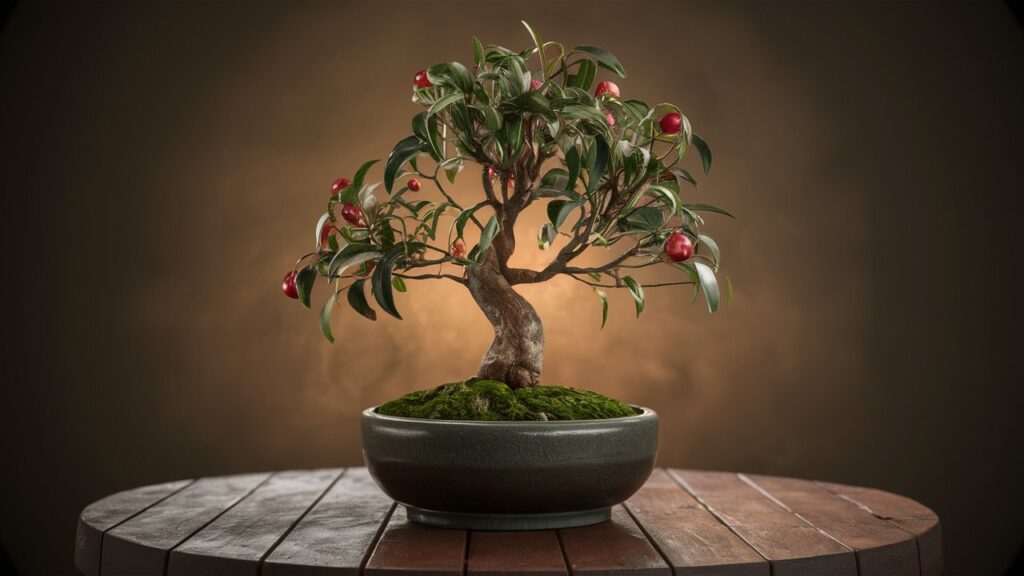
Consistently Moist Soil: Keep the soil consistently moist, but avoid letting it become waterlogged. The Chinese Sweet Plum Bonsai thrives in a balanced moisture environment, where the soil is neither too dry nor overly saturated. It’s crucial to strike this balance to maintain healthy root growth and overall plant health.
Thorough Watering: Water the bonsai thoroughly until water drains from the bottom of the pot. This ensures that the entire root system receives adequate hydration and helps to flush out any accumulated salts or impurities in the soil. Always check that the drainage holes are clear to prevent water from pooling at the bottom.
Daily Watering in Summer: During the hot summer months, the bonsai may require daily watering due to increased evaporation and growth demands. Monitor the soil moisture level regularly and adjust your watering schedule to prevent the soil from drying out completely. This consistent care helps the bonsai remain vibrant and healthy during periods of intense heat.
Humidity
Daily Misting: Mist the leaves daily, especially when the bonsai is indoors. This helps maintain the necessary humidity levels that the Chinese Sweet Plum Bonsai prefers, preventing the leaves from drying out due to indoor heating or air conditioning.
Use a Humidity Tray in Winter: To increase moisture levels during the dry winter months, place your bonsai on a humidity tray filled with water and pebbles. This setup provides a steady source of moisture as the water evaporates, creating a more humid microenvironment around the bonsai. This is particularly beneficial when indoor air tends to be drier due to heating systems.
Fertilizing and Repotting
Fertilizing
Balanced Liquid Fertilizer Monthly: Use a balanced liquid fertilizer once a month during the growing season, typically from spring through early fall. This provides essential nutrients that support healthy growth and development for your Chinese Sweet Plum Bonsai.
Half the Recommended Dosage: Reduce the dosage to half the recommended amount on the fertilizer package. Bonsai trees require less fertilizer than regular plants due to their small root systems, and over-fertilization can harm the bonsai by burning the roots.
Avoid Fertilizing in Winter: Refrain from fertilizing during the winter months. The bonsai’s growth slows down significantly during this period, and fertilizing can disrupt its natural dormancy cycle, leading to weak or spindly growth.
Repotting
Frequency: Repot deciduous varieties every 2-3 years and evergreen varieties every 4-5 years. This helps ensure healthy root growth and prevents the bonsai from becoming root-bound.
Root Trimming: When repotting, trim no more than one-third of the roots. Excessive root pruning can stress the bonsai and hinder its recovery. Focus on removing old, dead, or overly long roots to encourage new growth.
Timing: Repot in mid-summer, when the tree is most resilient and actively growing. This timing supports a smoother recovery and minimizes stress on the bonsai.
Pruning and Training
Pruning
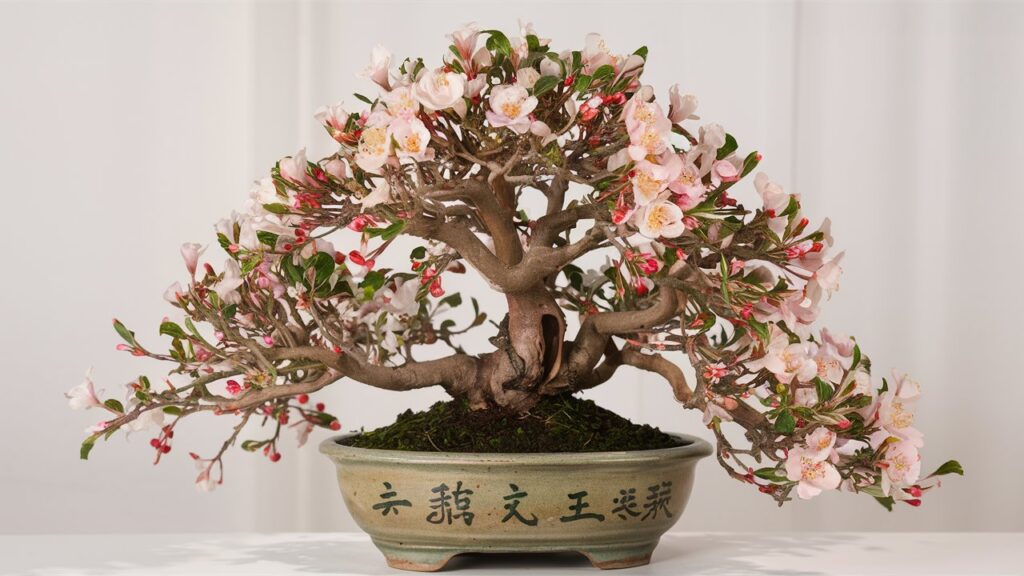
Trim New Growth: Regularly trim new growth to maintain the desired shape of your bonsai. This helps keep the tree compact and well-formed, enhancing its aesthetic appeal.
Avoid Removing All New Growth: Never remove all new growth during pruning, as this can stress the bonsai and affect its overall health. Always leave some foliage to ensure the tree continues to thrive and photosynthesize effectively.
Use Sharp, Clean Pruners: Use sharp, clean pruning shears to avoid damaging branches and to make precise cuts. This reduces the risk of infection and promotes healthy, clean growth.
Wiring
Infrequent Use: Wiring is not commonly used for the Chinese Sweet Plum Bonsai. The tree’s natural growth habits often don’t require extensive wiring.
Brittle Branches: If you do choose to wire, be cautious as the branches can be brittle and prone to breaking. Use gentle techniques and avoid applying excessive pressure to prevent damage.
Pests and Diseases
Common pests
Aphids and Whiteflies: These pests may occasionally affect your Chinese Sweet Plum Bonsai. They can cause damage by feeding on the plant’s sap and weakening its health.
Treatment: Treat infestations with insecticidal soap or neem oil. These options are effective and safe for bonsai, helping to control pest populations without harming the plant.
Diseases
Disease Resistance: The Chinese Sweet Plum Bonsai is generally disease-resistant when properly cared for. Regular maintenance, appropriate watering, and good environmental conditions help prevent most common diseases.
Conclusion
The Chinese Sweet Plum Bonsai is a fast-growing evergreen from southern China, known for its elegance and easy care. It thrives outdoors in summer with temperatures above 50°F and at least six hours of direct sunlight. In winter, place it indoors in a south-facing window, as it loses leaves below 55°F and suffers damage below 25°F. Keep the soil moist without waterlogging, and mist daily to maintain humidity.
Fertilize monthly during the growing season at half the recommended dose and avoid fertilizing in winter. Repot every 2-3 years for deciduous types and every 4-5 years for evergreens, trimming roots by no more than a third. Prune to maintain shape, using sharp pruners and leaving some new growth.
Wiring is not often used due to brittle branches. Although generally disease-resistant, the bonsai may attract pests like aphids and whiteflies, which can be treated with insecticidal soap or neem oil. Overall, the Chinese Sweet Plum Bonsai is a rewarding choice for enthusiasts, offering beauty and tradition with proper care.
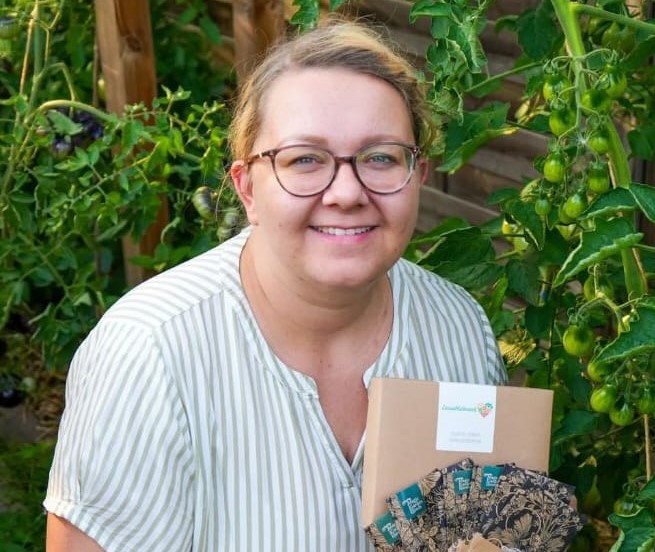
Karen Phillips, Bonsai expert and blogger. Read more about me here

